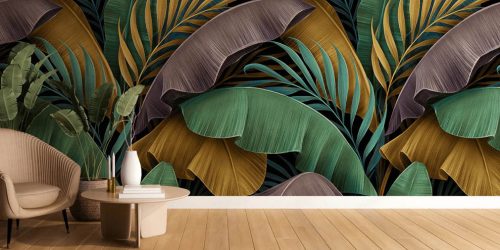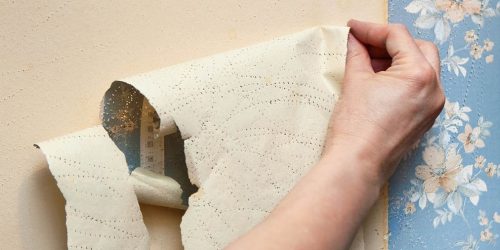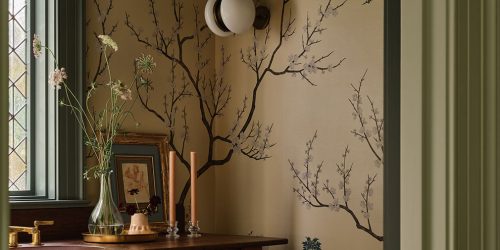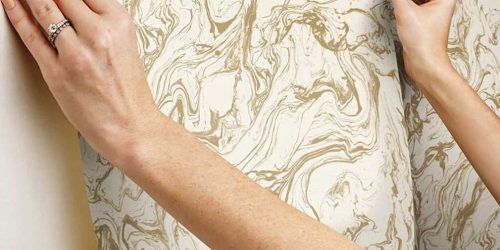Wallpaper and Wall Paint Perfect Match: Mixing Design Techniques
When it comes to home interior design, the combination of wallpaper and wall paint is a powerful tool to create a dynamic and personalized space. While both wallpaper and wall paint have their own unique aesthetic appeal, combining them can yield a sophisticated yet stylish environment that stands out. The art of blending these two elements lies in striking the perfect balance between colors, textures, and patterns.
1. The Benefits of Mixing Wallpaper and Paint
Combining wallpaper and wall paint in one room offers several advantages:
- Versatility: Wallpaper can be used as an accent while paint covers the larger surfaces, creating a flexible look that is both functional and visually appealing.
- Texture Contrast: Paint provides a smooth, matte, or glossy finish, whereas wallpaper adds texture and depth. This contrast elevates the design of any room.
- Cost Efficiency: Wallpaper can be pricey, but using it strategically for one wall or sections of a room paired with paint can provide the look of luxury without breaking the budget.
- Customizability: By selecting different paint colors and wallpaper patterns, you can create a unique space that reflects your personality or enhances the existing décor of your home.
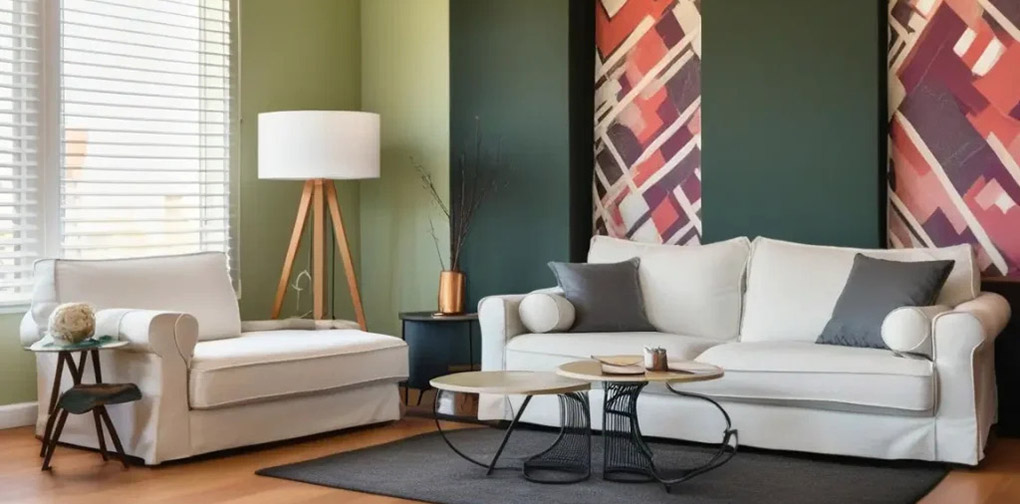
2. Choosing the Right Wallpaper and Paint Combination
The key to creating a harmonious space when combining wallpaper and paint is to choose styles, patterns, and colors that complement each other rather than clash. Here are some tips to help you make the right choice:
a. Balance Bold and Subtle Patterns
If you love bold patterns in wallpaper, balance them out with a simple, neutral-colored paint. This allows the wallpaper to take center stage while maintaining a sense of harmony in the room. For example, a striking floral or geometric print wallpaper can be paired with a muted gray or beige wall paint, making the space feel vibrant without overwhelming the eye.
On the other hand, if your wallpaper is subtle and understated (such as a light textured design), you can use bolder, contrasting colors for your wall paint. This combination adds depth and dimension to your space while allowing the wallpaper to provide a touch of sophistication.
b. Consider the Color Scheme
When mixing wallpaper and paint, selecting a cohesive color scheme is essential. You don’t need to match the exact colors, but they should harmonize well. For instance, if you choose a wallpaper with blue and white patterns, you can paint the walls in a matching or complementary shade of blue or soft gray.
Neutral colors like whites, grays, and beiges are easy to match with various wallpaper designs, creating a calm and versatile foundation. Conversely, if you want to create a bolder aesthetic, experiment with contrasting colors or monochromatic tones for a more modern and daring approach.
c. Textures Matter
Texture plays a crucial role when combining wallpaper and paint. Wallpaper adds an element of tactile interest, especially if you choose textured options like fabric, embossed, or grasscloth. In such cases, you can use flat paints with a subtle sheen for contrast, letting the wallpaper’s texture stand out.
For rooms with smooth, painted walls, consider wallpaper designs with texture to add visual depth. For example, a glossy white wall could be paired with a textured, matte wallpaper for an elegant contrast.
3. Where to Use Wallpaper and Paint Combinations
You can strategically incorporate wallpaper and paint combinations in several areas of your home, depending on your goals and the mood you wish to evoke.
a. Feature Wall vs. Entire Room
A common approach is to apply wallpaper to one accent wall while painting the remaining walls in a complementary or neutral color. This creates a visual focal point that draws attention to the wallpaper, while the painted walls help balance the design.
For example, in a living room, you could opt for a statement wallpaper with floral patterns for the wall behind the couch, while painting the other walls a calm shade of cream or light gray. This approach adds interest without overwhelming the room.
Alternatively, you can create a cohesive look by using wallpaper and paint on the entire room. You can use wallpaper on all walls but pair it with painted trim, molding, or ceiling areas to break up the design and provide visual structure.
b. Entryways and Hallways
Wallpaper and paint combinations are perfect for entryways and hallways, where a more dynamic and inviting atmosphere can be created. Here, you might use wallpaper on the top half of the wall with paint on the lower half. This allows for visual separation and adds elegance to a narrow space.
Another creative solution is to use wallpaper on one side of the hallway and paint the opposite side, establishing a sense of depth and dimension.
c. Bedrooms and Bathrooms
In bedrooms, you can experiment with a feature wall behind the bed using wallpaper to add drama and warmth. For bathrooms, wallpaper on one or two walls paired with waterproof paint on the remaining walls offers both style and practicality.
Be mindful of the materials used, especially in bathrooms, where humidity can affect wallpaper. Opt for vinyl or washable wallpaper and water-resistant paints to ensure durability.
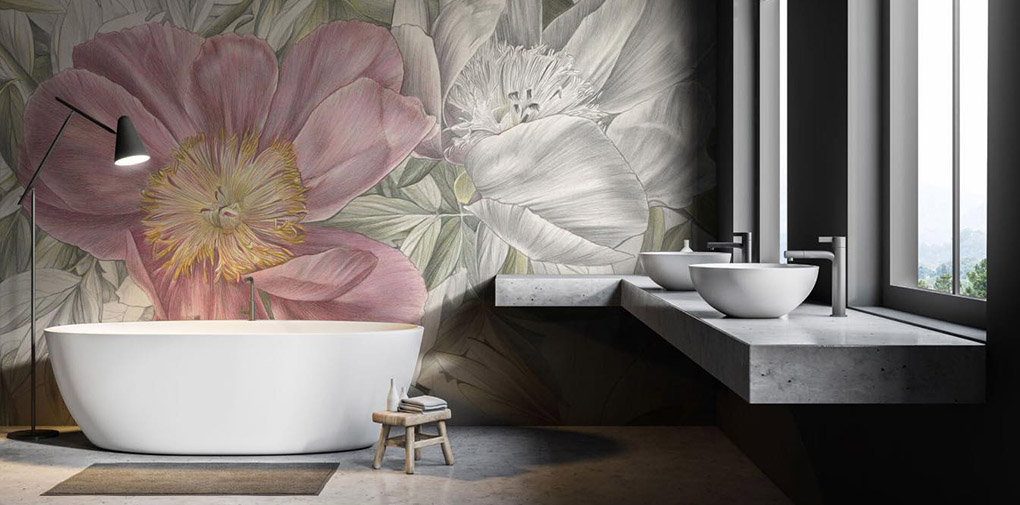
4. Designing with Wallpaper and Paint: Ideas to Try
Here are some design combinations to inspire your home:
a. Classic Stripes
Stripes are a timeless pattern that works beautifully with solid-colored paint. Horizontal or vertical stripes in wallpaper can make a room feel more expansive, while painting the other walls in a solid color helps maintain balance. Consider pairing light stripes with a bold color for a modern feel or a muted stripe with soft neutrals for a more traditional design.
b. Nature-Inspired Designs
For a calming and natural atmosphere, pair earthy, nature-inspired wallpaper (such as leafy patterns or soft florals) with muted tones of green, beige, or gray paint. This combination works particularly well in bedrooms, creating a serene and peaceful environment.
c. Geometric Contrast
Geometric wallpaper designs—whether bold triangles, circles, or abstract shapes—work well with solid, monochromatic wall colors. To create a striking look, pair a vibrant geometric wallpaper with a deep, contrasting paint color, such as navy blue or charcoal gray. This modern approach can add a touch of contemporary style to any room.
d. Vintage and Elegant
For a vintage or luxurious vibe, opt for wallpaper with damask or floral patterns in gold, silver, or deep tones, paired with matte or satin-finish paint in complementary colors. This combination brings warmth and elegance to spaces like dining rooms or formal living rooms.
When combining wallpaper and paint, the key is to create a balanced, cohesive look that enhances your space while reflecting your personal style. Whether you choose to mix bold patterns with neutral tones or embrace subtle textures and complementary colors, the possibilities are endless. With thoughtful planning and careful execution, wallpaper and paint can work together to transform any room into a stunning work of art.
So, embrace the beauty of mixed design techniques—experiment, play with colors and textures, and discover the perfect combination that elevates your space to new heights.
